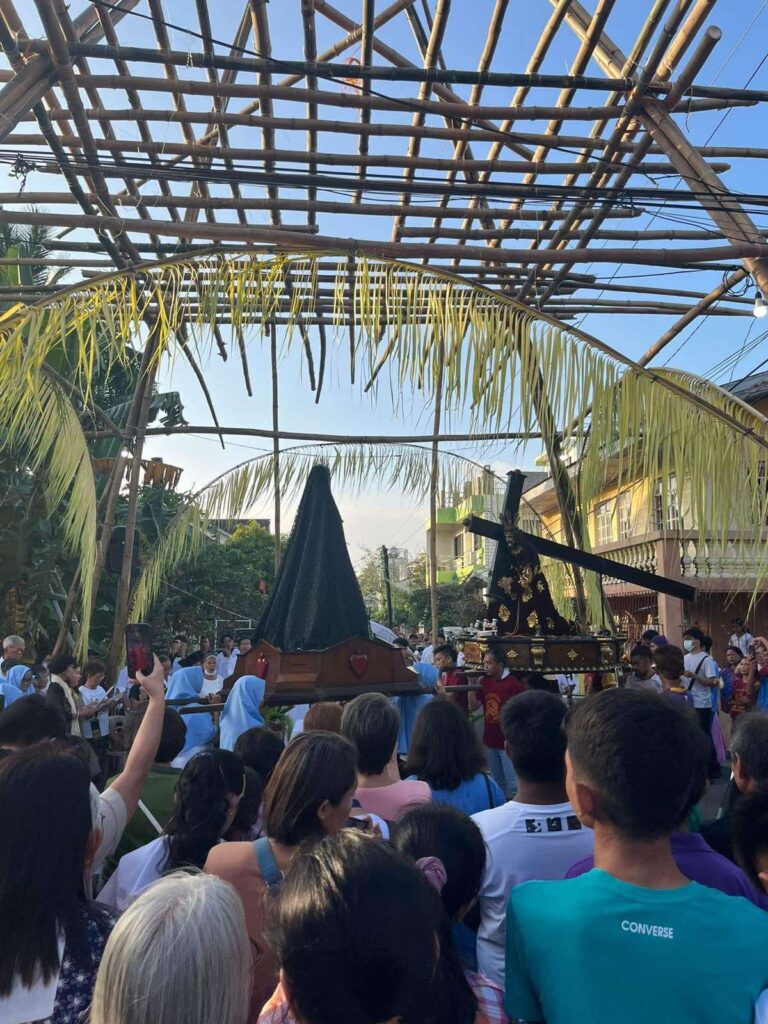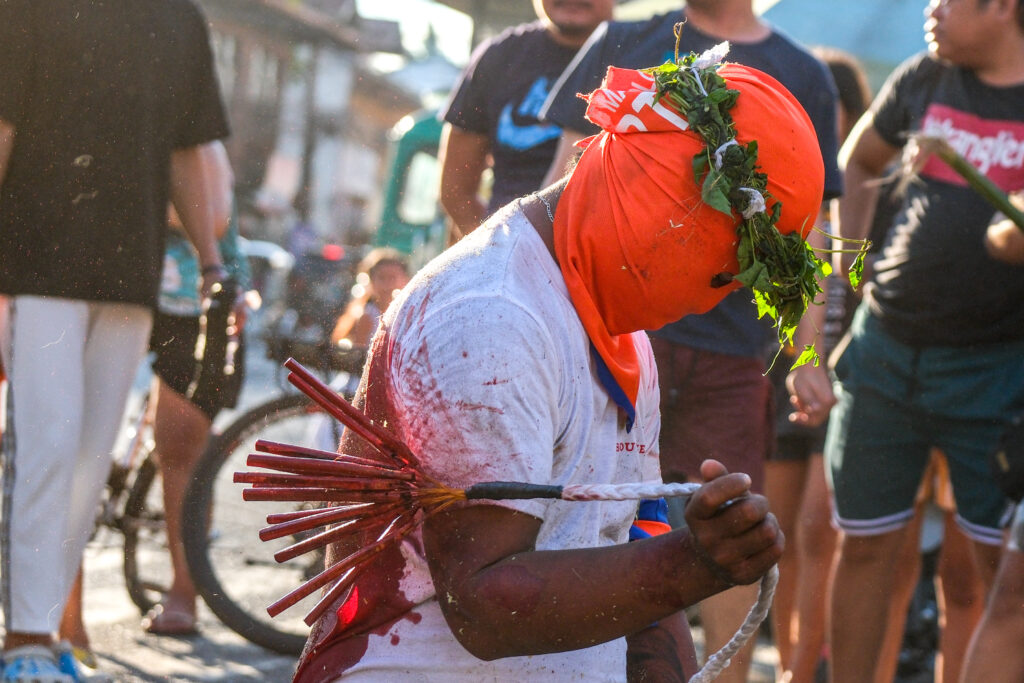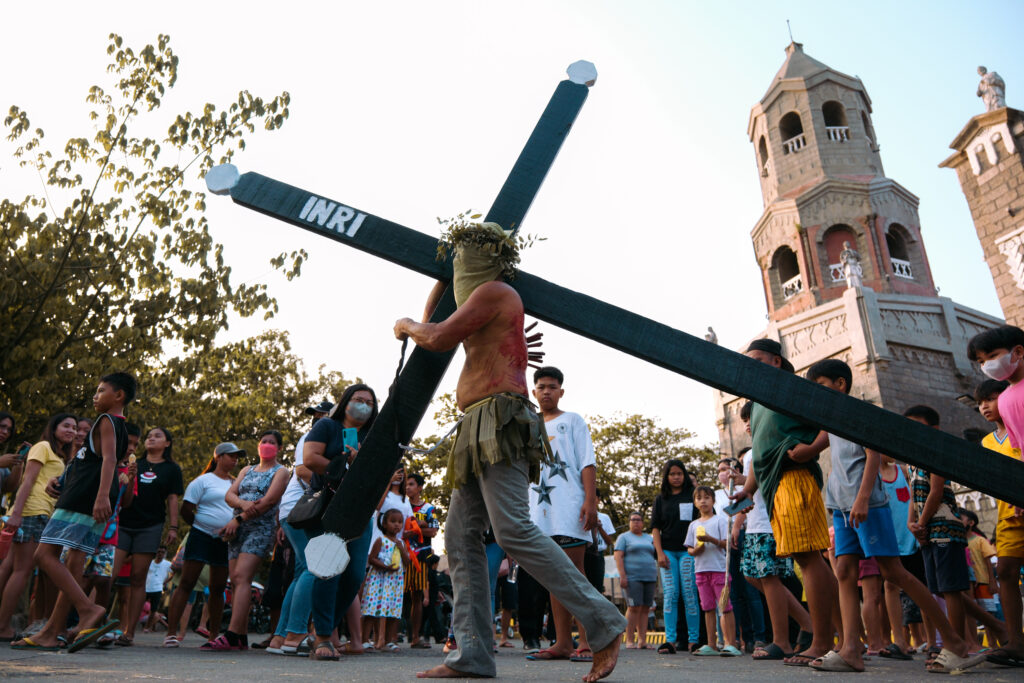While many Filipinos, especially those living in Metro Manila, take the Holy Week break as an opportunity to visit other regions or even travel abroad, there are those who opt to stay home and observe the solemnity of the Lent season. How? By following the Catholic traditions and even some superstitious beliefs.

Procession of religious floats
The common procession, or prusisyon, becomes more eventful during Holy Week when life-sized statues of saints called poon or santo take center stage while aboard their respective floats. The procession, which traditionally takes place on Holy Wednesday, ends in the parish church, where the statues will be kept until Good Friday. Then it’s time for another procession for the statues to return to their owners. Parishioners watch in reverence the floats that pass by and they also get invited by the owners for some snacks. This practice is called caridad or pakaridad in some places.

Visita Iglesia
Loosely translated in English as “church visit,” this tradition of visiting at least seven churches is practiced on Maundy Thursday or Good Friday. It is one of the most popular sacred vows, or panata, that also doubles as a tour of famous churches in the country.
You and your companions can do the visita iglesia around your city or town, and you may be surprised with what you’ll discover in other barangays. Make a list of the seven or more churches you’ll visit, starting with the nearest to your house and then to the ones you’ve been to or heard of. You can verify the location with a little online search, which usually results to a link to the church’s Facebook page.
When you’ve started the Visita Iglesia, keep in mind to pray in front of the Blessed Sacrament or of a row of the Stations of the Cross in each church you visit. There’s a belief among devotees that prayers are granted after completing their panata.
If you opt not to travel outside your barangay, you can try instead going on a via crucis, or way of the cross. Your local chapel or parish church designates spots for each one of the Stations of the Cross, and you can check out all of them while reliving Christ’s last moments.

Pabasa
Pabasa is the non-stop reading or chanting of the Pasyon, a narrative book that tells the life story of Jesus Christ. It lasts for a full 24 hours or more, depending on the pace of the readers or chanters, but it should end by Good Friday. It’s supposed to be a form of meditation and expression of faith to God, as well as a communal activity.
Some families make it their panata to host a pabasa, so there’s at least one reading in a barangay. After the reading, they usually serve lugaw (porridge) and other refreshments as a gesture of thanks and camaraderie.


Sinakulo
Sinakulo is also spelled senakulo or cenaculo, the Spanish word for cenacle that pertains to the main room where Jesus Christ and His disciplines had the Last Supper. It dramatizes the life and Passion of Christ either onstage on in the streets.
In many parts of Cainta municipality in Rizal, residents dress up as characters in the passion play even if they’re not part of the street play. So if you fancy dressing up as a discipline or centurion, and you’re near the area, why not heading to this suburb.
Salubong
Salubong is the anticipation of Christ’s resurrection as the culmination of the Lenten Season. The ritual starts very early in the morning at the parish church, where people also hold a vigil, and ends in preparation for the Easter Sunday Mass.
Unlike abstaining from meat, which is in line with the Catholic faith, there are other Holy Week practices Filipinos follow that could be considered superstitious beliefs, or pamahiin. For instance, the belief of refraining from merriment or making noises, particularly on Good Friday, thus the expression, “mukhang Biyernes Santo” (having a face of Good Friday).
According to University of the Philippines-Los Baños anthropology professor Christian Rosales in an online article, refraining from merriment or making noises is a sign of respect to the time of mourning. The Holy Week is a time of mourning for the death of Jesus Christ.
Then there’s the belief of avoiding to get a cut or anything that will result in a wound to the skin specifically on Good Friday at 3 p.m. That’s the time Jesus Christ is believed to have been crucified. So, the belief is the wound inflicted during Good Friday will take a long time to heal.
